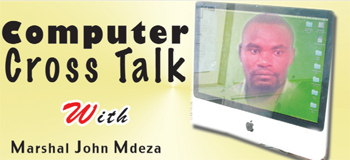Africa-Press – Malawi. Until 2015, when Microsoft abandoned the tradition, a new Windows release had always been a eureka moment. Why not? A new Windows release was supposedly an answer to tithing problems a previous Windows OS had.
Windows 3.1 and Windows 3.11 hit the ground with a big bang. While Windows 3.0 did not provide easy networking tools, Windows 3.11 did. When Windows 95 arrived on the scene, CNN, BBC, Sabc and almost all the network channels and newspapers covered the event. It was as if Microsoft had discovered gold.
Windows 98 and ME (Millennium Edition) followed and history repeated itself. Although Windows ME was the worst Windows version ever, fraught with serious backward compatibility issues, the launch was no less spectacular.
Windows XP (eXPerience), probably the best ever Windows OS, did not debut without the usual fanfare. Windows Vista was touted to be a paradigm shift. While the event was mesmerizing, W i n d o w s Vista was not to be. Later, Windows 7 atoned for the sins of Windows Vista.
Since the release of Windows 95, when Microsoft introduced the Start Menu, tech writers enjoyed the innuendo that one needed to start Windows in order to shut it down. The press team at Microsoft hated that pan with disdain.
Microsoft software engineers had a solution that would shut the uncouth tech journalists; Windows 8; a Windows OS without Start Menu but with icons that were arranged like tiles on the floor. You guessed right, the launch was nirvana for Microsoft Press team.
On July 29 2015 Microsoft released Windows 10. During the unveiling ceremony, the keynote speaker, having probably taken too much of the bitter substance, made the stunning revelation that Windows 10 was the last Windows version after which only incremental updates would be made available.
Six years later, Microsoft has made a U-turn and has announced that Windows 10 will sunset on October 14 2025. In ordinary speak, Microsoft will release Windows 11 (or whatever it may be called) very soon.
Among other things, Windows 11 will have a revamped Settings feature. The settings will include most of the Control panel tools. Currently Windows 10 has both the settings and Control Panel. The latter is for advanced Windows users.
This is unavoidable route for Microsoft because the competition, Google and Apple are still doing it; releasing new versions of Chrome, Android or iOS. These moments are important for us tech writers, they make us relevant. Get ready for upcoming Windows 11 updates.






